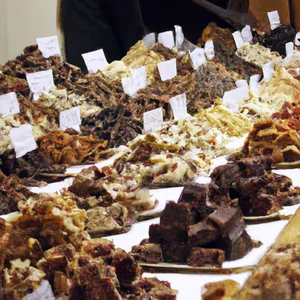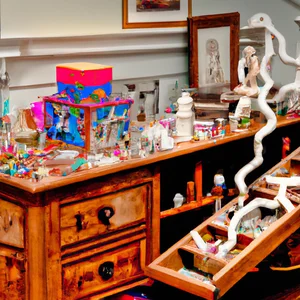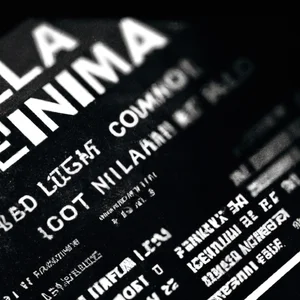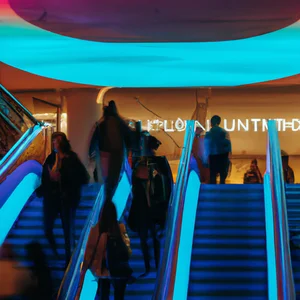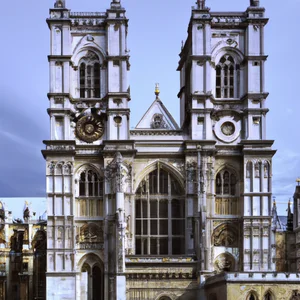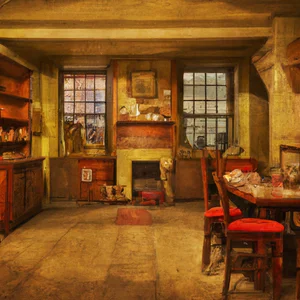Book your experience
Tower of London: 1000 years of history, crown jewels and legendary ravens
The Tower of London: a place that has seen everything in a thousand years, and believe me, it’s not just any old building! It’s like a giant history book, full of adventures and mysteries. And then, there are the crown jewels, which are truly unbelievable. Imagine seeing diamonds that shine like stars and gold that glitters so much that it makes you want to wear it even just for a moment!
And the crows, oh, these crows! It is said that if they were ever to leave, the British monarchy would collapse like a house of cards. Of course, I don’t know if that’s true, but it’s a pretty fascinating image, isn’t it? These black birds, always around, almost seem like silent guardians of all those secrets that the Tower hides.
Speaking of secrets, once, during a visit with some friends, I remember hearing a guide tell of a ghost wandering the corridors. I don’t know if I believe it, but the idea of a soul in pain wandering among ancient stones is a little disturbing, but also fascinating. In short, every corner of that place seems to have a story to tell.
And then, it must be said that visiting the Tower of London is like diving headlong into history. With every step, you feel a bit like an explorer from the past. Maybe you will never be a king or queen, but for a few hours, while you walk among those walls, you feel a little special, as if you were part of something big.
Ultimately, if you happen to be in London, don’t miss this opportunity. Think about it: a thousand years of history, magnificent jewels and crows that, who knows, might even tell you something. Perhaps, in the end, this is precisely the beauty: the mix of history, legend and a pinch of magic that makes the Tower of London a truly unique place.
A journey through time: 1000 years of history
Imagine crossing the imposing stone doors of the Tower of London and being enveloped by an atmosphere that seems suspended in time. The first time I visited this historic castle, I felt like a time traveler, walking across floors that have seen centuries of history, from the crowns of kings to the swords of the condemned. Every stone tells a story, and every corner is imbued with events that have shaped not only London, but the entire world.
A timeless heritage
Built in 1066 by William the Conqueror, the Tower of London has witnessed events ranging from coronations to executions, royal weddings to uprisings. Today, visitors can explore the tower’s various levels, admiring exhibits that tell the story of this fortress, now a UNESCO World Heritage Site. According to Historic Royal Palaces, the Tower is not just a monument, but a real time capsule in which legends and reality merge.
An insider tip
If you want a unique experience, I recommend joining one of the occasionally organized night tours. These events offer a rare opportunity to explore the tower in an almost mystical atmosphere, under the moonlight, with ghost stories and legends coming to life as you walk among the ancient walls. These tours are not always advertised, so it is advisable to check the official website for available dates.
Cultural impact
The Tower of London is not only a symbol of the British monarchy; it is also a reflection of the political and social tensions that have marked the course of English history. Its transformation from fortress to prison, from royal palace to museum, represents the continuous evolution of British society. Each visit offers an opportunity to reflect on how the past influences the present, making history tangible and personal.
Sustainability and responsibility
In an age where tourism faces significant challenges, the Tower of London is committed to sustainable practices. During your visit, you may notice initiatives such as waste reduction and the use of renewable energy. Choosing to explore historic sites responsibly not only preserves the heritage, but also enriches your experience, making it more meaningful.
Soak up the atmosphere
Let yourself be carried away by the magical atmosphere of the Tower of London: listen to the tales of the Beefeaters, observe the ravens that guard the castle and be enchanted by the architectural details that tell stories of a distant era. Each visit is an opportunity to explore the rich tapestry of English history, where every thread is woven with dramatic events and unforgettable characters.
An activity worth trying
Don’t forget to visit the White Tower, the beating heart of the structure, where you can admire the historical weapons and armor on display. It is an experience that allows you to understand the strategic importance of the castle over the centuries.
Myths to dispel
A common misconception is that the Tower of London is just a place of executions and torture. Although these aspects are part of its history, the castle also has a fundamental role in British culture as a symbol of strength and a monarchy that has adapted through the centuries.
Final reflection
As you leave the Tower of London, ask yourself: What history will you take with you? This is not just a sightseeing visit, but an opportunity to connect with a past that continues to influence the present. History is alive, and every step you take within the ancient walls brings you closer to a deeper understanding of your cultural heritage.
The Crown Jewels: unmissable treasures
An unexpected encounter with royalty
During my visit to the Tower of London, I found myself walking slowly among the historic walls when a group of fascinated tourists stopped in front of the Jewel House. The emotion in their eyes was palpable, almost as if they were discovering a lost treasure. I decided to join them and, in that moment, I realized that the Crown Jewels are not only a symbol of power, but also represent centuries of British culture and history. Each jewel has a story to tell, and the air full of wonder around me was ideal for immersing myself in this unique experience.
Treasures to discover
In the heart of the Tower of London, the Jewel House houses some of the most extraordinary treasures of the British monarchy. Among them, the famous Imperial State Crown, adorned with 2,868 diamonds, 273 pearls, 17 sapphires and 11 emeralds, is a stunning example of the goldsmith’s art. Don’t forget to admire Edward’s Raven, a gem that dates back to the 14th century, a symbol of monarchy, but which also has a history of intrigue and power struggles.
An insider tip
If you want to avoid the queues and enjoy the jewels in peace, try visiting the Jewel House in the late afternoon. Many tourists focus on the other attractions, leaving time to explore these must-see treasures with fewer crowds. Furthermore, I recommend asking local custodians to share anecdotes or curiosities about the jewels; they are often custodians of fascinating stories that you won’t find in tourist guides.
The cultural impact
The crown jewels are not just ornaments; they represent a deep connection with the history of the British monarchy and its evolution over time. Each piece tells stories of coronations, royal weddings and pivotal moments in the UK’s history, reflecting the richness and diversity of British culture.
Sustainability and responsibility
The Tower of London is committed to preserving not only its treasures, but also its surroundings. During your visit, you may notice sustainable practices implemented to reduce environmental impact, such as recycling and the use of renewable energy for daily operations.
An unforgettable experience
For an even more immersive experience, take part in a guided jewelery tour. The expert guides will not only take you among the treasures, but will also tell you intriguing stories about how these pieces have been passed down through the generations.
Myths and reality
A common misconception is that jewelry is displayed statically and that there is nothing else to discover. In reality, the Jewel House is a living place, where history is intertwined with modernity, and new pieces can occasionally be added to the collection.
A final reflection
As you walk away from the Jewel House, ask yourself: what do these jewels really mean to British culture? It is an invitation to reflect not only on their aesthetic beauty, but also on the power and history they represent. The next time you think about royalty, remember that behind every gem there is a story waiting to be told.
Legendary ravens: guardians of the castle
A close encounter with the winged guardians
I vividly remember my first encounter with the crows at the Tower of London. As I walked along the ancient walls, the atmosphere was steeped in history and mystery. Suddenly, a crow landed on a stone, its piercing gaze seeming to peer into the soul of anyone who approached it. It is said that if the ravens were to ever abandon the castle, the British monarchy would fall. This ancient legend is intertwined with the daily life of the castle, making these birds not just simple inhabitants, but the true guardians of history.
Practical information on Tower ravens
Currently, the Tower of London is home to six ravens, cared for with great care. Each raven has a name and a specific link with tradition: for example, one of the best known is Merlina, in honor of the magical art. Interestingly, the ravens’ caretaker, the Ravenmaster, takes care of their nutrition and health, creating a unique bond between man and animal. If you want to meet them, the best time is in the morning, when the crows are most active and other visitors are still absent.
An insider tip
If you want a truly unique experience, I recommend taking one of the evening guided tours, where the Ravenmaster tells fascinating stories about ravens and their historical importance. These sessions are limited and offer a rare opportunity to see the moonlit castle, while hearing anecdotes that few tourists know.
The cultural importance of crows
Crows aren’t just fascinating animals; they are a symbol of the British monarchy. Their presence is so ingrained in popular culture that their story has been immortalized in numerous books and works of art. Legend has it that if the ravens ever leave the castle, the monarchy may be in danger. This helps create a deep and almost mystical connection between ravens and British history.
Towards responsible tourism
The conservation of ravens and their welfare has become part of a wider approach towards sustainable tourism at the Tower of London. The visits are designed to respect the natural habitat of the birds, avoiding disturbing their behavior. Participating in these experiences not only enriches your visit, but also supports vital conservation practices.
An immersive experience
Imagine walking through the courtyard, surrounded by centuries of history, as crows fly overhead, making their distinctive calls. You may be lucky enough to see a crow take off for an aerobatic flight, a moment you will remember forever.
Clearing up the myths
A common misconception is that crows bring bad luck. On the contrary, in the English tradition, they are considered bearers of wisdom and are respected for their role as guardians. This myth is often fueled by superstitions, but knowing the truth makes your visit even more fascinating.
A final reflection
As you observe these magnificent birds, ask yourself: What story could a raven tell if only it could talk? The next time you visit the Tower of London, stop to reflect on how these ravens are silent witnesses to centuries of historical events, guardians of a rich and mysterious past.
Discover the mystery of medieval torture
A spine-chilling experience
I still remember my first visit to the Tower of London, a place steeped in history and legends. As I walked along the ancient walls, I came across a small exhibition dedicated to medieval torture instruments. The atmosphere was filled with an eerie energy, and a cold sensation ran down my spine. The images of suffering prisoners and the stories of injustice made me reflect on the dark reality of that period. This corner of the castle is not only a testament to power and royalty, but also a warning of the atrocities that humanity can inflict.
What to expect
The section dedicated to medieval torture offers an overview of tools such as the iron cage, used to inflict humiliation and pain, and the torturer, a tool that makes you shudder just to look at it. According to the Tower of London’s official website, these tools were not simply means of punishment, but an integral part of a system of social control that reflected the fears and uncertainties of the time. Each object tells a story, and guided tours offer fascinating details about how justice was administered in the past.
An insider tip
A little-known tip is to book a guided tour specializing in medieval history. These experiences offer unique insights and anecdotes that you won’t find on regular tours. Also, don’t forget to ask your guide to tell you about Torre di Lanza, a lesser-known place where executions took place.
The cultural impact
Interest in medieval torture practices has influenced popular culture, resulting in films, books, and even TV series. These portrayals, while often exaggerated, remind us of the importance of reflecting on our history and human rights. The Tower of London, with its complex history, serves as an important lesson in revenge and forgiveness.
Sustainable tourism
Visiting the Tower of London can also be an opportunity to practice responsible tourism. Part of the proceeds from the visits are reinvested in the conservation of historic structures. Choosing to visit on less crowded days will not only enhance your experience, but will also help preserve this heritage for future generations.
An experience worth trying
After exploring the torture section, don’t miss the opportunity to visit Tower Green, a place of reflection that contrasts the pain of the past. Here, you can immerse yourself in an atmosphere of stillness, reflecting on how stories of suffering can evolve into narratives of resilience.
Myths and misconceptions
A common misconception is that all prisoners at the Tower of London were tortured. In reality, only a minority have suffered such atrocities. Torture was the exception, not the rule, and was often used to obtain confessions from those deemed a threat to authority.
A final reflection
As you leave the Tower of London, ask yourself: How can we learn from our past mistakes to build a more just future? The history of medieval torture is a dark chapter, but it is also an invitation to reflect on our humanity. The next time you visit a historic place, take a moment to consider not only what was, but also what we can do to ensure history doesn’t repeat itself.
Explore Tower Green: a place of reflection
A moment of introspection
I vividly remember the moment when I set foot in Tower Green, an area often overlooked by hasty tourists who crowd in front of the famous towers of the Tower of London. Located just inside the walls, this green space, surrounded by stories of power and betrayal, is an island of tranquility that invites reflection. As I walked across that grassy lawn, I felt a shiver down my spine, knowing that public executions had taken place there, including those of Anne Boleyn and Lady Jane Grey. The beauty of the green contrasted with the weight of the story, making the moment even more profound.
Practical information
Tower Green is open to the public during Tower of London visiting hours, which vary depending on the season. It is advisable to purchase tickets in advance on the official website Historic Royal Palaces to avoid long waits. Furthermore, the garden is also accessible for people with disabilities, making it an inclusive place for everyone.
An insider tip
A trick that few people know about is visiting Tower Green in the early hours of the morning. Not only will you find fewer tourists, but you may also be lucky enough to witness the Changing of the Guard, an event often overlooked by those focusing only on the Tower. Sitting on a bench and observing the ceremony is an experience that gives a sense of connection with history.
Cultural and historical impact
Tower Green is not just an area of natural beauty; represents an important part of British history. Memorials are found here commemorating people who met a tragic end, and the place has become a symbol of justice and revenge. His presence inside the Tower of London offers a unique perspective on life and death in the British monarchy.
Sustainable tourism practices
Nearby, Tower Green is an integral part of a sustainability plan that aims to preserve natural and cultural heritage. Taking a guided tour led by local experts not only enriches your experience, but also helps keep history alive, as a portion of the proceeds is reinvested in the maintenance of the site.
Soak up the atmosphere
Walking along Tower Green as the sun sets behind the ancient walls is an experience that feels almost magical. The long shadows lengthen on the lawn, and the light wind carries echoes of past stories. The peace of this space contrasting with the turmoil taking place outside its walls creates an almost mystical atmosphere.
An activity worth trying
After exploring Tower Green, I recommend taking a quick trip to the nearby Crown Jewels Exhibition. Here, you can admire royal treasures that tell the story of the British monarchy. Visiting the jewels is a perfect way to complete your historical experience.
Myths and misconceptions
A common misconception about Tower Green is that it is only a performance venue; in reality, it is also a place of celebration and reflection. Many visitors don’t realize that, despite its tragic associations, the garden is a symbol of hope and rebirth.
A new perspective
After visiting Tower Green, I invite you to reflect on how the history of a place can influence the present. What stories of courage and resilience might we discover if we took a moment to listen? The next time you visit a historic site, consider taking a moment to reflect and connect with the stories it holds.
Sustainability at the Tower of London: a responsible approach
An Unexpected Discovery
On a visit to the Tower of London, as I admired the towering medieval walls and glittering crown jewels, I was surprised to see how much effort was being put into sustainability. A particular anecdote struck me: a caretaker of the castle told me how the internal garden was not only a place of beauty, but also an example of sustainable gardening. The plants were selected not only for their appearance, but also for their impact on the local ecosystem. A wonderful way to combine history and environmental responsibility!
Practical and Updated Information
Recently, the Tower of London has implemented several sustainable practices, from recycling materials to monitoring water use. According to a report by the Historic Royal Palaces, sustainability initiatives have led to a significant reduction in their ecological footprint. Visitors can also take tours that highlight these practices, offering a unique opportunity to learn how a historic icon can embrace the future.
An Insider Tip
If you want an authentic experience, I recommend visiting Tower Green early in the morning. Not only will you have the chance to admire the beauty of the place without the crowds, but you will also be able to participate in a short sustainable gardening workshop taught by local experts. This workshop is not advertised, so it’s worth asking at the information office!
Cultural and Historical Impact
Sustainability at the Tower of London is not just a matter of ecology, but also reflects a wider cultural shift. Environmental awareness is becoming an integral part of the historical narrative, showing how even the most historic institutions can adapt to modern times. This responsible approach invites visitors to reflect on their role in the preservation of historical and natural heritage.
Immerse yourself in the Atmosphere
Imagine walking between the ancient walls of the Tower of London, surrounded by lush vegetation that tells stories of centuries past. The scent of fresh flowers mixes with the crisp London air, creating an almost magical atmosphere. Each step brings you closer not only to history, but also to a greener and more sustainable future.
Activities to Try
In addition to the gardening workshop, another activity not to be missed is the sustainable practices tour, where you can discover how the Tower of London is working to reduce its environmental impact. This tour offers a unique perspective on the fusion of history and sustainability, making your visit even more meaningful.
Myths and Misconceptions
It is common to think that historic places like the Tower of London are frozen in time and cannot adapt to new needs. However, the reality is very different. Historic institutions can and must evolve, integrating modern practices to ensure their preservation and relevance.
Final reflection
Considering what we have learned about sustainability at the Tower of London, I invite you to reflect: how can we, as visitors and citizens, contribute to the preservation of our history and our environment? Every small gesture counts, and history teaches us that change is possible, even in the most unexpected places.
Local experience: a walk within the walls
An indelible memory
During my visit to the Tower of London, I vividly remember the moment I walked through the castle’s heavy wooden doors. Sunlight filtered through the clouds, creating a play of shadows that danced on the ancient stone walls. As I walked along the walkway, stories of kings and queens, of prisoners and ravens, seemed to whisper in my ear. It’s an experience that conveys a sense of wonder and respect for the history that permeates every brick.
Practical information
To fully enjoy this experience, I recommend starting your walk early in the morning, when the castle is less crowded and you can enjoy the architectural details without distractions. The site is easily accessible by tube, getting off at Tower Hill station. Remember to buy the online ticket to avoid long queues. According to the Tower of London’s official website, guided tours are available in multiple languages and offer a unique perspective on various aspects of the castle.
An insider tip
A little-known trick is to look for less crowded vantage points, like the balcony of the White Tower. Here, you can enjoy breathtaking views of the River Thames and the city of London, making your trip even more special. Also, don’t forget to keep an eye out for the famous ravens, as their presence is an integral part of the castle’s legend.
The cultural impact of the walk
This experience is not just a journey through history; it is a way of understanding the role that the Tower of London has had in the formation of British identity. Its walls have seen crucial historical events, such as the coronation of sovereigns and the executions of famous figures. Walking within its walls is like walking on a stage where epochal human dramas have taken place.
Sustainability and responsibility
As you explore, look out for sustainable practices implemented by the castle, such as recycling materials and initiatives to reduce environmental impact. The Tower of London is working to become an example of responsible tourism, encouraging visitors to respect the environment and experience history consciously.
Immerse yourself in the atmosphere
The ancient walls, the cobbled paths and the echo of visitors’ footsteps create a unique atmosphere. Imagine hearing whispers of past stories as you explore the various corners of the castle. It is not just a place to visit, but an experience to live.
An activity not to be missed
I recommend taking a night tour if available. The atmosphere created at sunset is magical, and the soft lights illuminate the ancient stones, making the castle even more evocative.
Myths to dispel
A common misconception is that the Tower of London is just a boring museum. In reality, it is a living place, full of compelling stories and interactive experiences that engage visitors in surprising ways.
A final reflection
As you leave the Tower of London, I invite you to reflect: what stories remain unheard within these walls? What do past experiences teach us about our present? A journey within the castle walls is not only a dive into history, but also an opportunity to explore our connection with time and memory.
Little-known stories: famous prisoners
A shadow of history within the walls
I still remember my visit to the Tower of London, when, while walking among the ancient walls, I came across a small group of tourists listening to a fascinating story about the famous prisoner Sir Walter Raleigh. His tragic fate, marked by an unjust death sentence, resonated in my ears like an echo of an era in which power and politics intertwined in unpredictable ways. The Tower, more than a simple monument, thus becomes a stage where personal dramas and stories of life and death take place.
The prisoners who made history
The Tower of London has hosted a number of illustrious prisoners over the centuries, each with a unique story. Among the most famous we find:
- Anne Boleyn, the beheaded queen, whose love for Henry VIII led to unprecedented political turmoil. -** Thomas More **, the chancellor who challenged the monarchy, only to pay the ultimate price for his integrity.
- Lady Jane Grey, the young queen for just nine days, whose dream of royalty tragically ended.
These stories not only enrich our understanding of the British monarchy, but also reveal the complexities and contradictions of an era when power was as coveted as it was dangerous.
An insider tip
If you want to delve deeper into the stories of these prisoners, I recommend taking one of the themed guided tours, available only at certain times. Expert guides, often dressed in period costumes, take visitors on an emotional journey through the events that marked the history of these characters, making the experience even more immersive.
The cultural impact of these narratives
The stories of famous prisoners have had a lasting impact on British culture, inspiring literary works, films and plays. The figure of Anne Boleyn, for example, has become a symbol of love and betrayal, while the story of Thomas More has raised questions about morality and loyalty. These narratives continue to influence how we perceive history and justice.
Sustainable tourism practices
When you visit the Tower, remember to respect the environment. Royal Palaces, the managing body, has implemented initiatives to reduce environmental impact, such as the use of sustainable materials and the promotion of awareness campaigns. Choose to use public transportation or walk to the Tower for a more responsible experience.
An experience not to be missed
For a truly unique experience, consider visiting Tower Green, the site of historic executions, where you can reflect on the heavy legacy of those who suffered there. Here, visitors can also see the monument dedicated to Lady Jane Grey, a tribute to her life and tragic end.
Dispelling the myths
A common misconception is that the Tower of London was solely a prison. In fact, it has also been a palace, an arsenal and a coronation place. This makes it a site full of contrasts and nuances, a microcosm of British history that goes beyond its function as a prison.
A new perspective
As you walk within the walls of the Tower, ask yourself: what other stories have remained silent among these stones? Every corner could tell another truth, another broken life or another broken dream. The Tower of London is not only a testament to monarchical power, but a custodian of stories that continue to shape British identity. We invite you to explore and discover these secrets, letting the story envelop you in an embrace of mystery and wonder.
Special Events: Experience history first hand
I clearly remember my first experience at the Tower of London, when I was lucky enough to come across a special event that recreated the medieval atmosphere. As I walked along the cobbled paths, the echo of drums and the rustle of historical costumes transported me back in time. It was like being a character in a novel, immersed in a time of kings and queens, battles and celebrations.
A unique opportunity
The Tower of London regularly offers special events, such as historical re-enactments, concerts and temporary exhibitions. These events not only make the visit more engaging, but also allow you to interact with actors in costume who tell stories of daily life in the Middle Ages. To stay updated on upcoming events, I recommend checking the official website of the Tower or the social pages, where the organizers publish the scheduled events.
An insider tip
A secret that few know is that during some historical re-enactments, it is possible to participate in interactive workshops where you learn to make medieval weapons or write with a quill pen. These experiences are not only fun, but also offer a unique opportunity to better understand the lives of those who lived within these centuries-old walls.
The cultural impact of events
The Tower of London is not just a monument, but a symbol of a complex and fascinating history. Special events help keep historical and cultural memory alive, involving visitors of all ages and offering a unique perspective on how history continues to influence the present. The re-enactment of historical events helps create a deeper connection with the past, making the visit a memorable experience.
Responsible tourism practices
Attending historic events at the Tower of London is also a way to support sustainable tourism practices. The organizers are committed to using eco-friendly materials and promoting tourism that respects the environment and local culture. Contributing to these events means supporting the preservation of history and culture for future generations.
An unforgettable atmosphere
Imagine walking among the ancient walls of the Tower, while the sun sets and the torches are lit, creating a magical atmosphere. The sounds of swords crossing and the laughter of children watching the jesters make everything even more enchanting. Each event is a chapter in a story that unfolds before your eyes.
An activity worth trying
Don’t miss the opportunity to attend one of the special opening nights, where the Tower of London stays open late and offers guided candlelit tours. These experiences will not only allow you to explore the Tower differently, but also savor its unique atmosphere when the crowds have thinned out.
Myths and misconceptions
A common misconception is that special events are only for tourists. In reality, the inhabitants of London actively participate, making these occasions a real cultural meeting. Additionally, many people don’t know that some historical reenactments are based on real events, making every detail even more fascinating.
A final reflection
Every time you visit the Tower of London during one of these special events, you have the opportunity to not just observe, but experience history. What story would you like to tell when you return home?
Exclusive Tip: Visit at sunset for fewer crowds
An unforgettable experience
I still remember my first encounter with the Tower of London. I was surrounded by tons of tourists, but it wasn’t until the sun started to set that I discovered the true magic of this historic place. The ancient walls, illuminated by a golden light, seemed to tell forgotten stories, and the noise of the crowds faded, allowing the whisper of history to emerge. If you want a similar experience, I highly recommend planning your visit for sunset. Not only will you have the opportunity to admire a breathtaking view, but also to enjoy the most intimate and contemplative atmosphere that this place has to offer.
Practical information
The Tower of London is open to the public until 5.30pm in the summer months, but the best time to arrive is about an hour before closing. Times may vary, so it’s always best to check the official [Historic Royal Palaces] website(https://www.hrp.org.uk/tower-of-london/) for updates. Also, I recommend purchasing tickets online in advance to avoid long queues.
An insider tip
A little-known trick is to bring a small blanket or pillow with you and find a quiet corner to sit and watch the sunset. Many visitors flock to the White Tower or along the Thames, but if you step back a few steps, you’ll find serene spaces where you can reflect and savor the moment.
The cultural impact
The Tower of London is not just an architectural marvel; it is a symbol of British history, witness to significant events that shaped the nation. Visiting at sunset allows you to appreciate not only the beauty of the site, but also its historical importance, evoking a sense of wonder at the past.
Sustainability and responsible tourism
Encouraging visits at sunset not only helps to distribute tourist flows, but also allows you to respect the environment. Fewer crowds means less stress on the site and a better experience for everyone. Also, consider using public transportation to get there, thus reducing your carbon footprint.
Immerse yourself in the atmosphere
Imagine being there, as the sky turns pink and orange, and the Tower of London rises majestically against the twilight sky. The sound of the bells of the nearby churches mixes with the rustling of the leaves and the singing of the birds returning to their nests. It is a moment that awakens the senses and invites reflection.
An activity worth trying
After dark, why not take a walk along the Thames? The reflections of the city lights on the water create an enchanting atmosphere and offer an excellent opportunity to take unforgettable photos.
Myths and misconceptions
A common misconception is that the Tower of London is always crowded and unwelcoming. Actually, if you visit at sunset, you can discover a completely different side of this monument. The calm and beauty of the moment will allow you to connect with the story in a way you never imagined.
Final reflection
Have you ever thought about how a simple time change can transform your travel experience? Try visiting the Tower of London at sunset and be amazed by the magic that lies behind every stone. What story will this ancient fortress tell you?

 Architecture and Design
Architecture and Design Cities and Regions
Cities and Regions Culture and History
Culture and History Events and Festivals
Events and Festivals Fashion and Shopping
Fashion and Shopping Food and Wine
Food and Wine Nature and Adventure
Nature and Adventure Unique Experiences
Unique Experiences


















